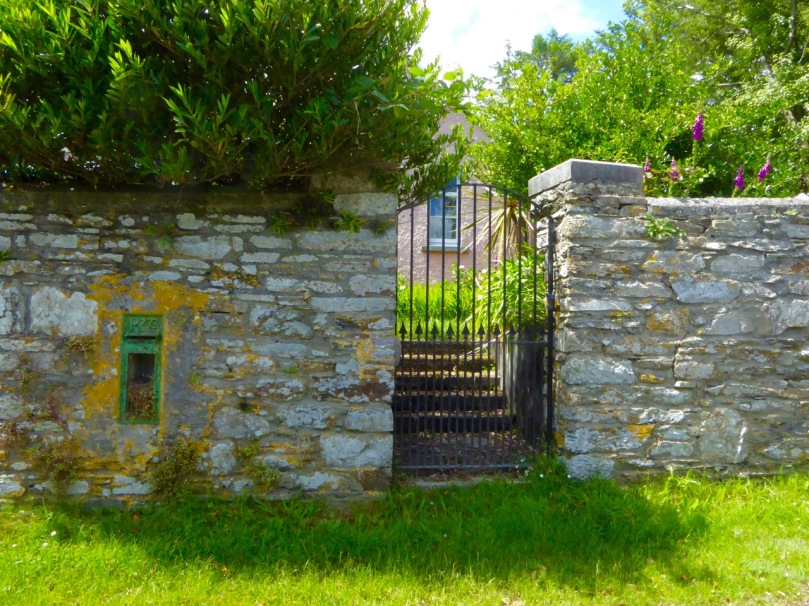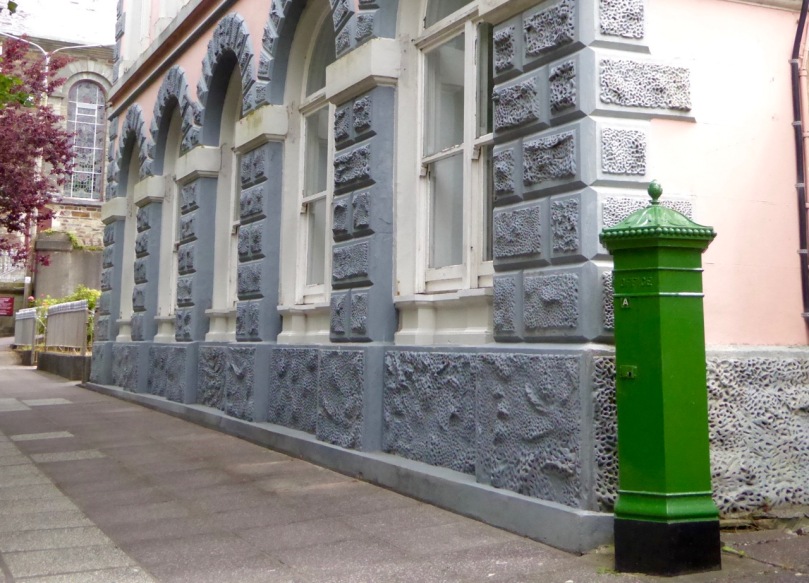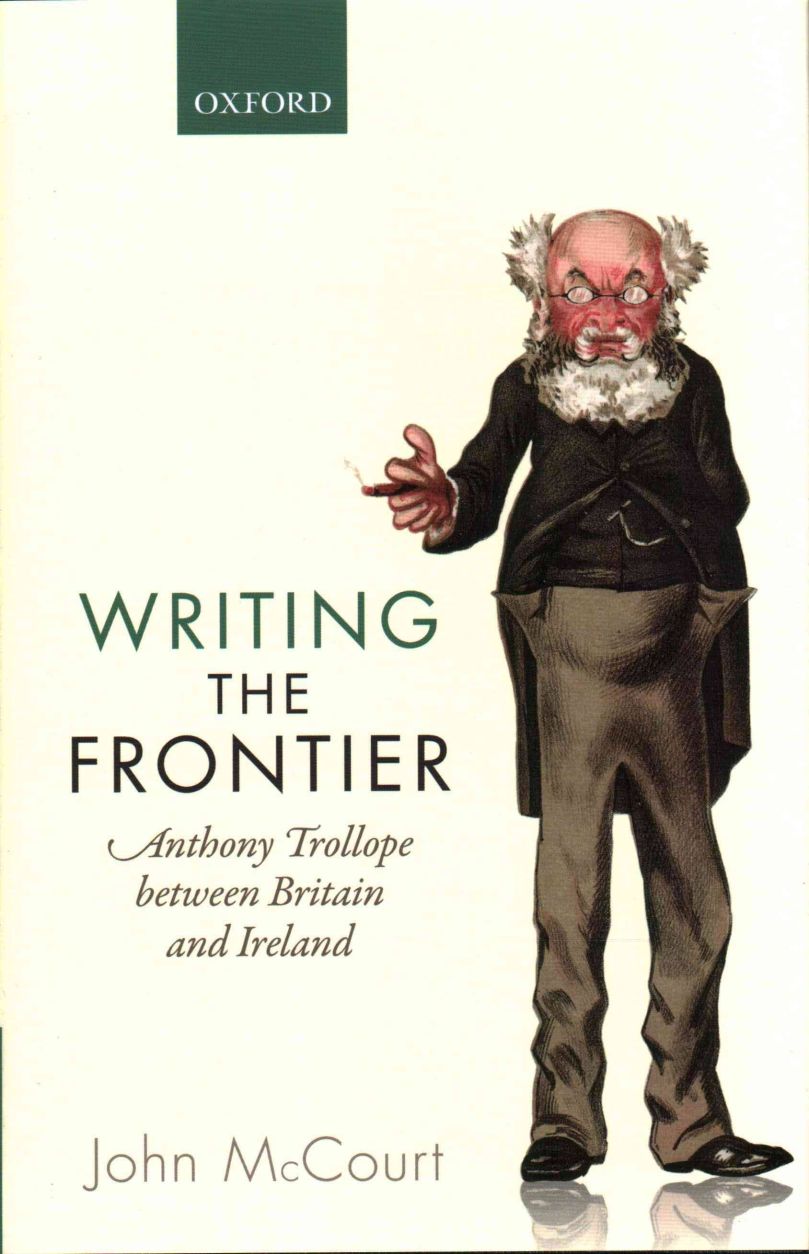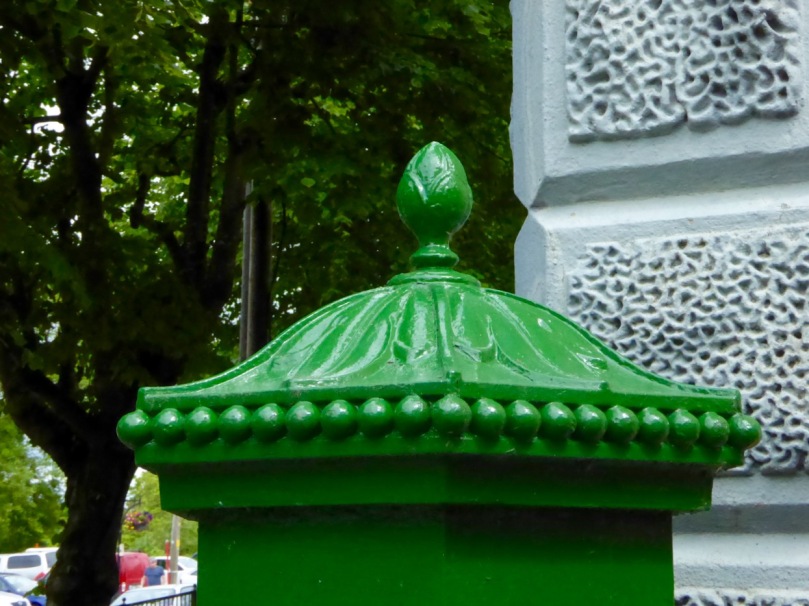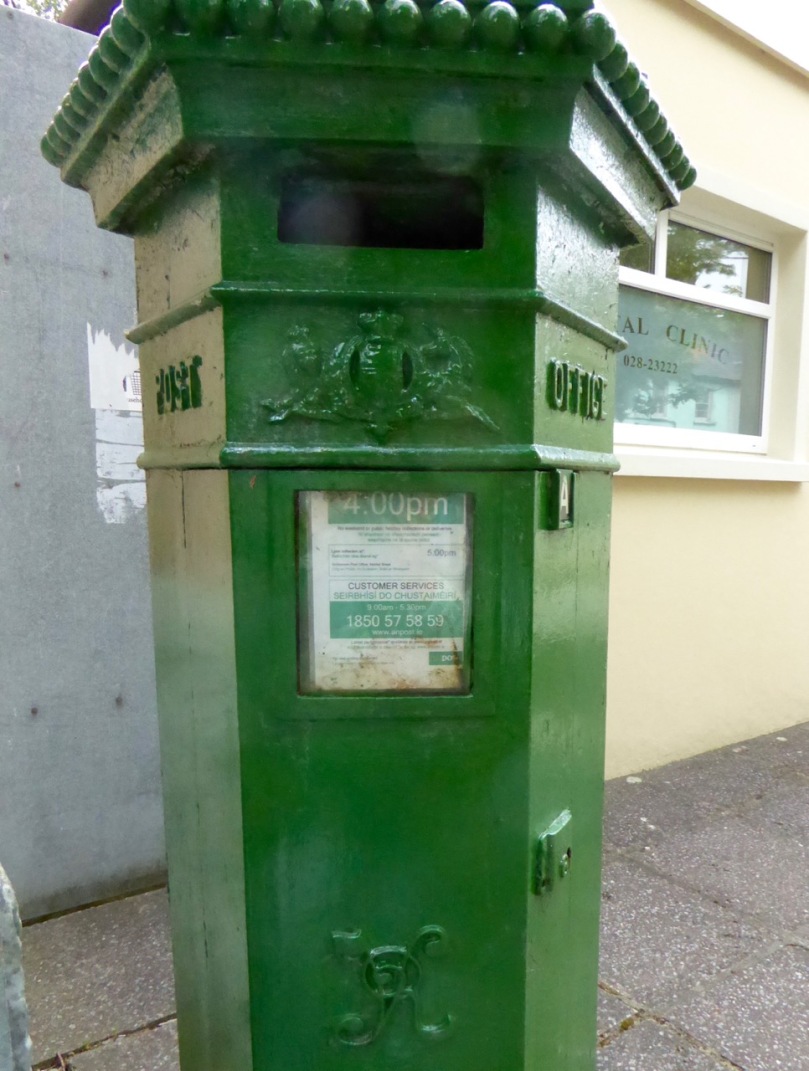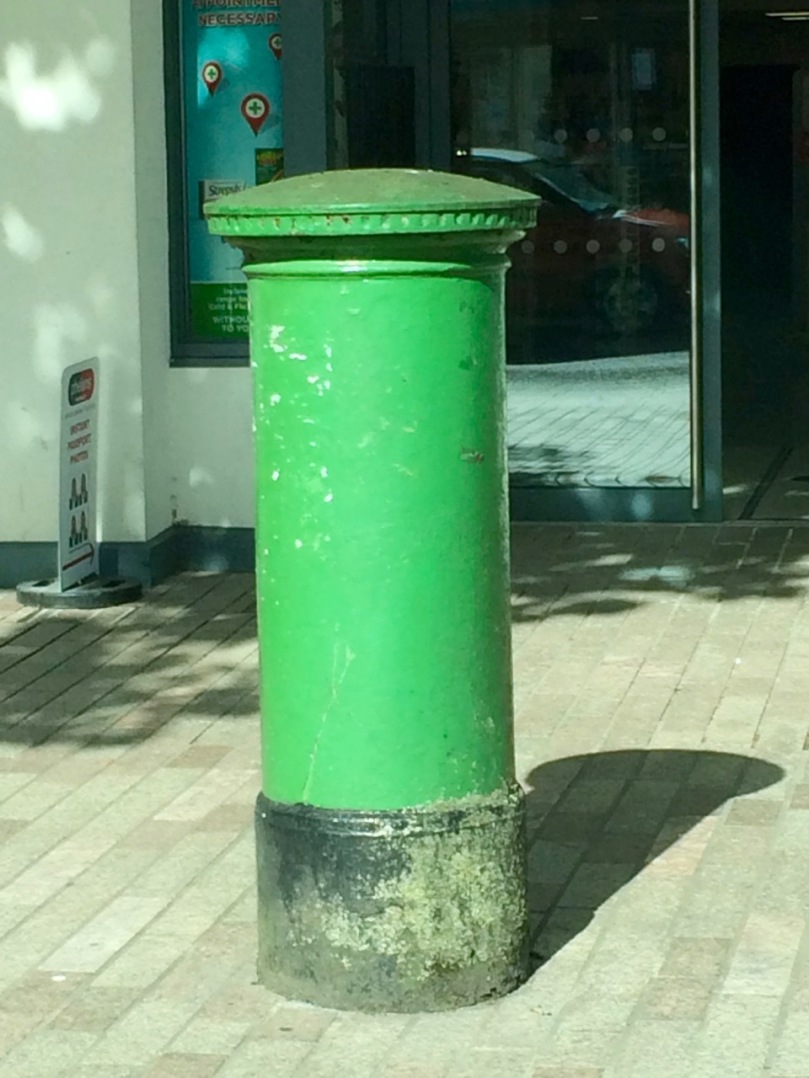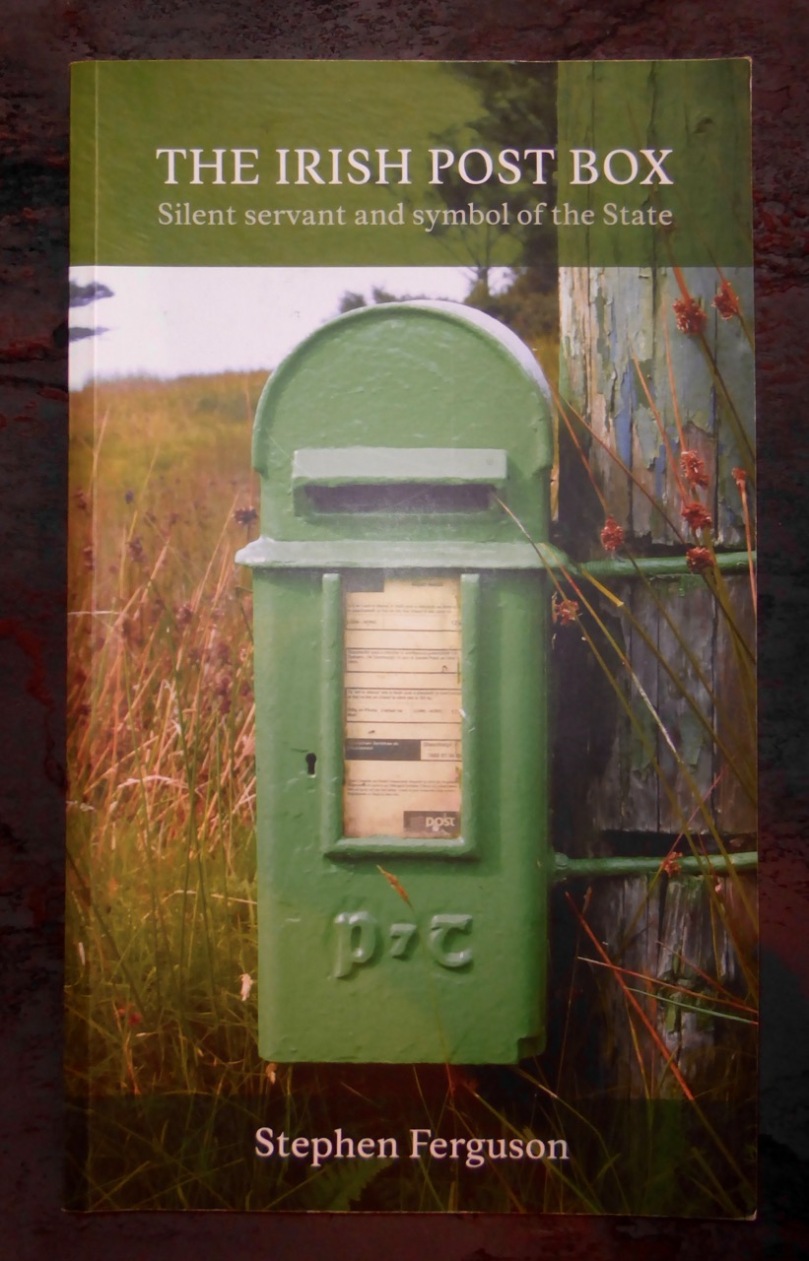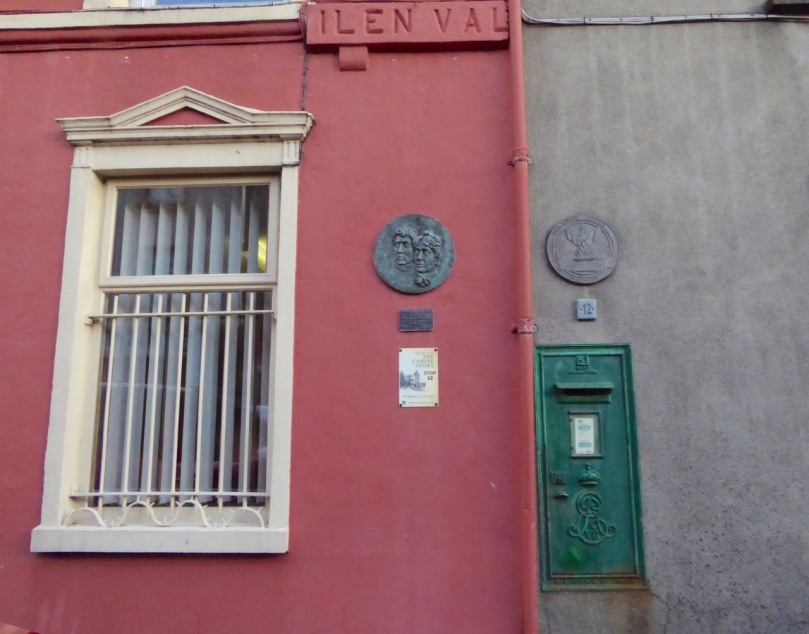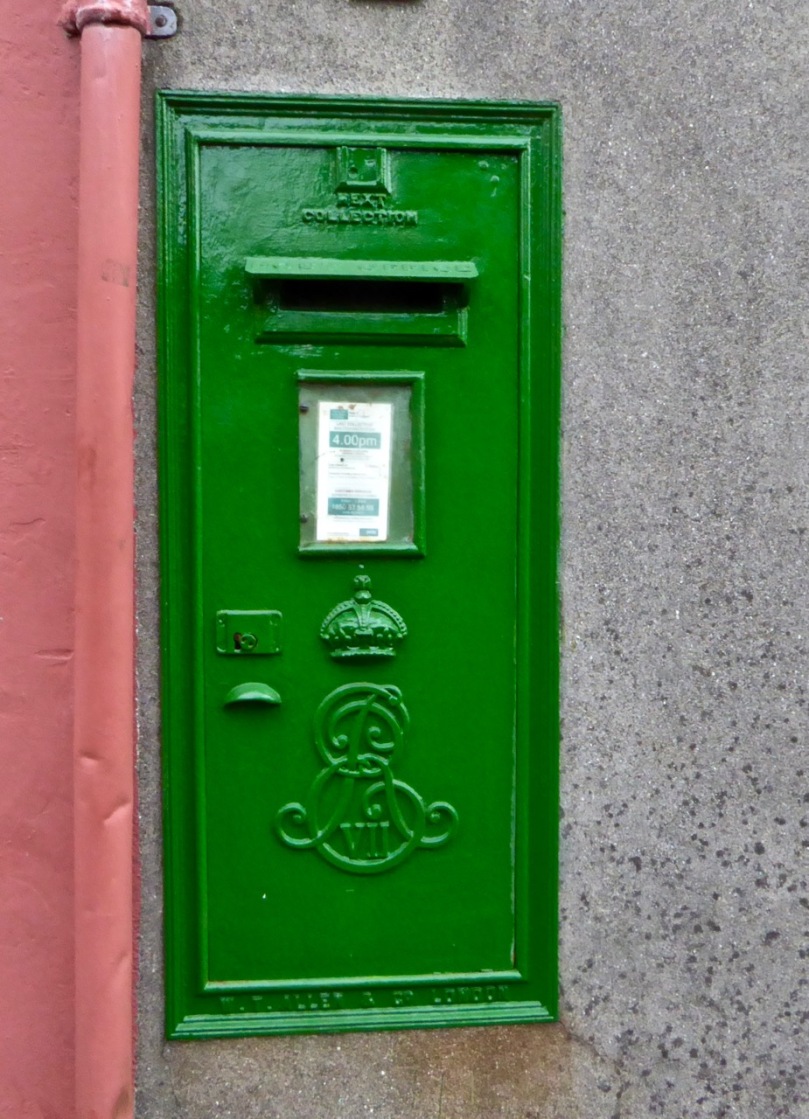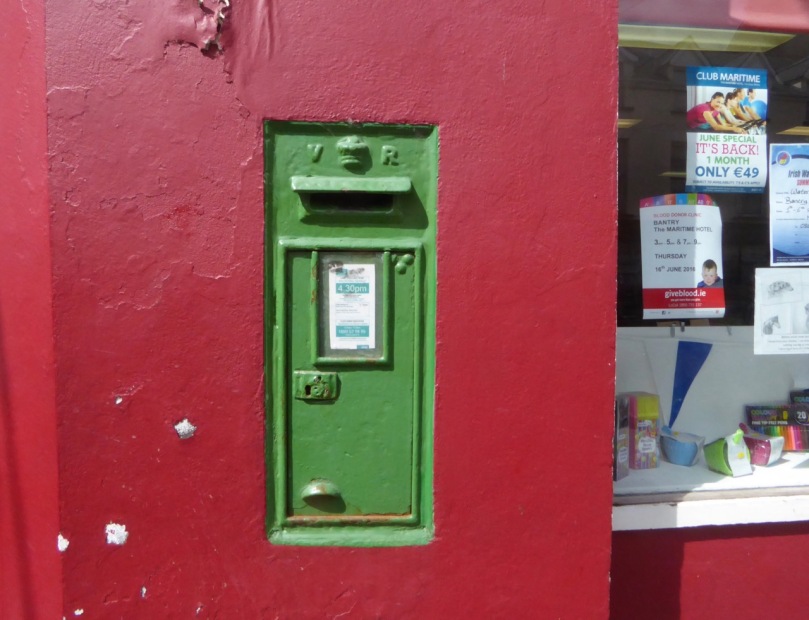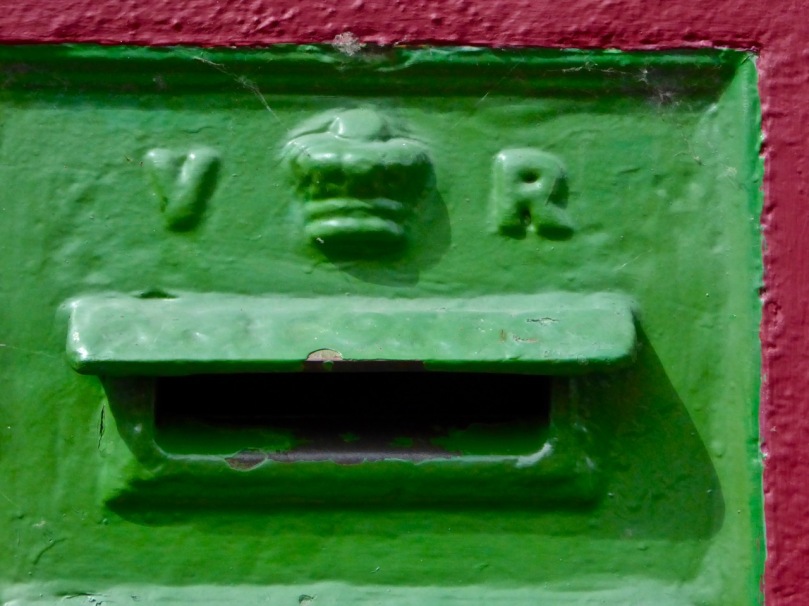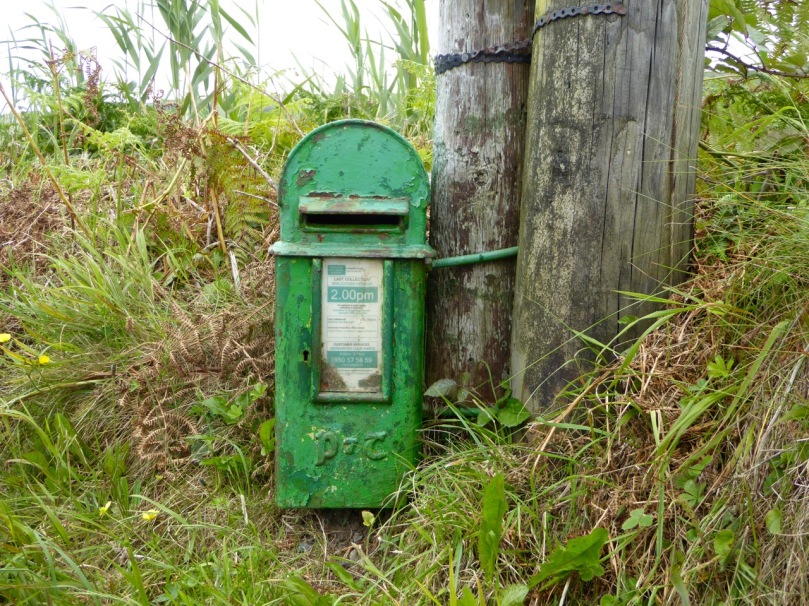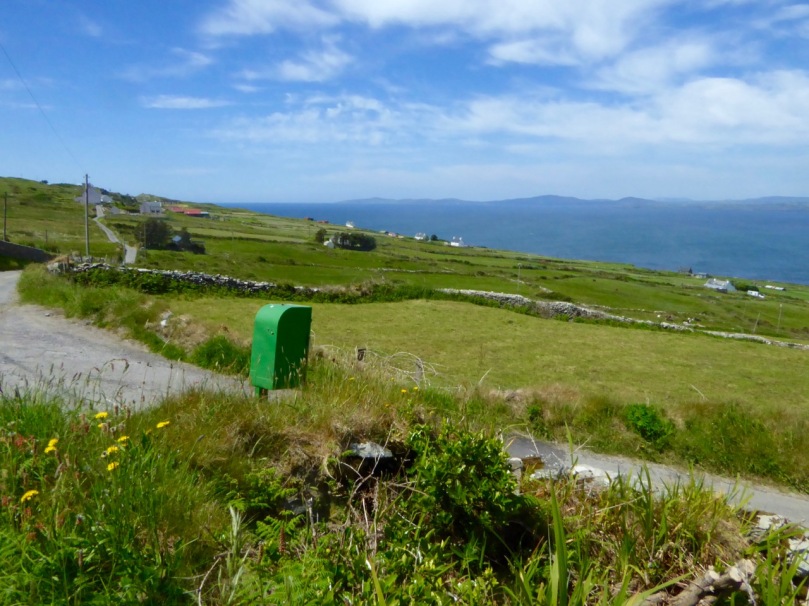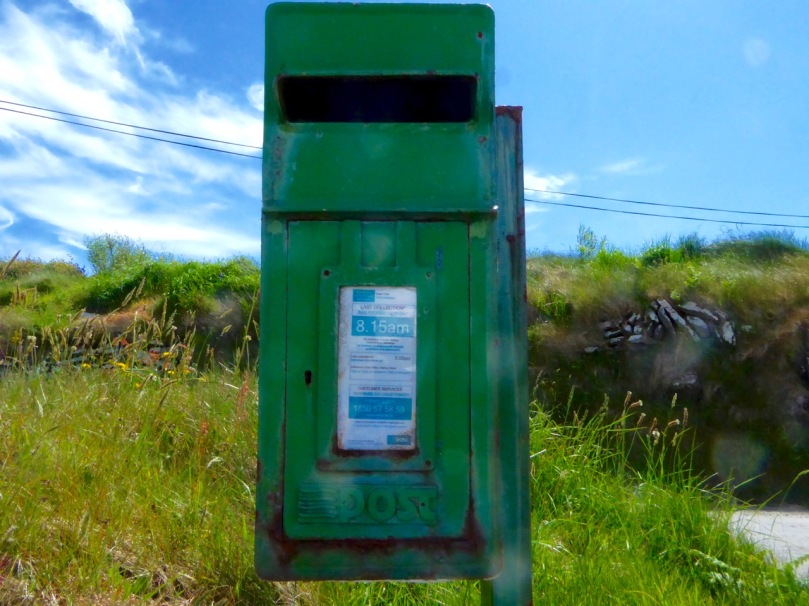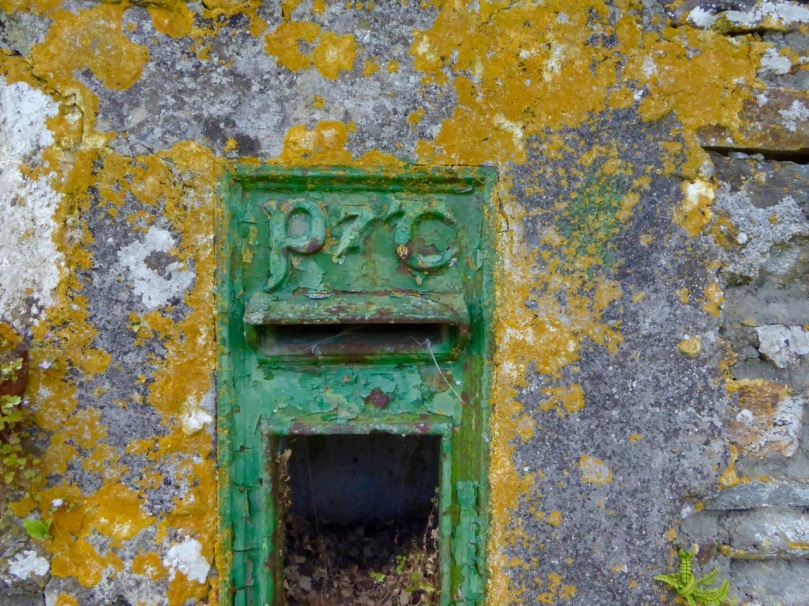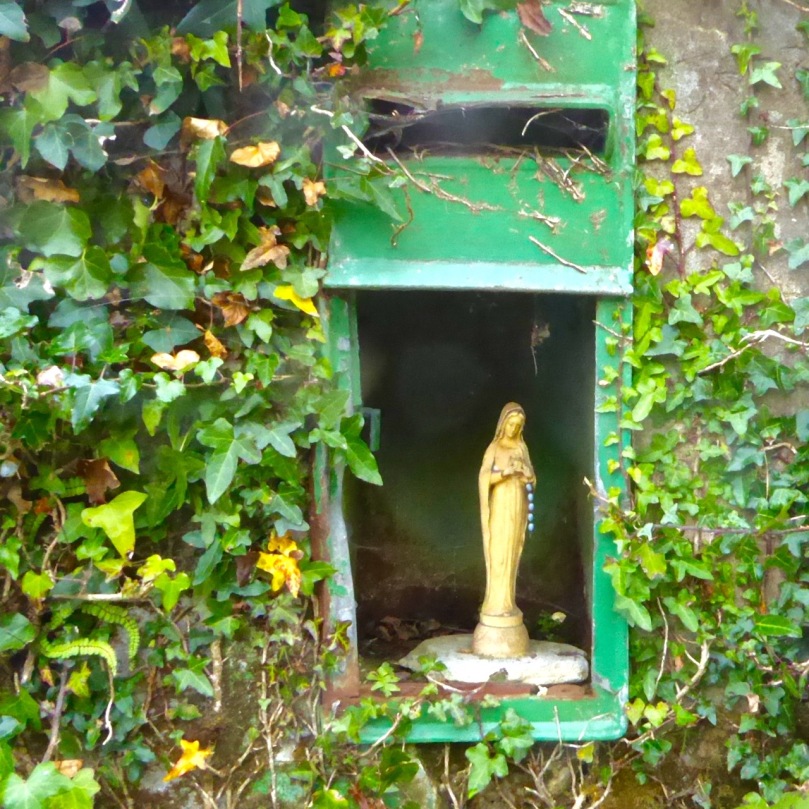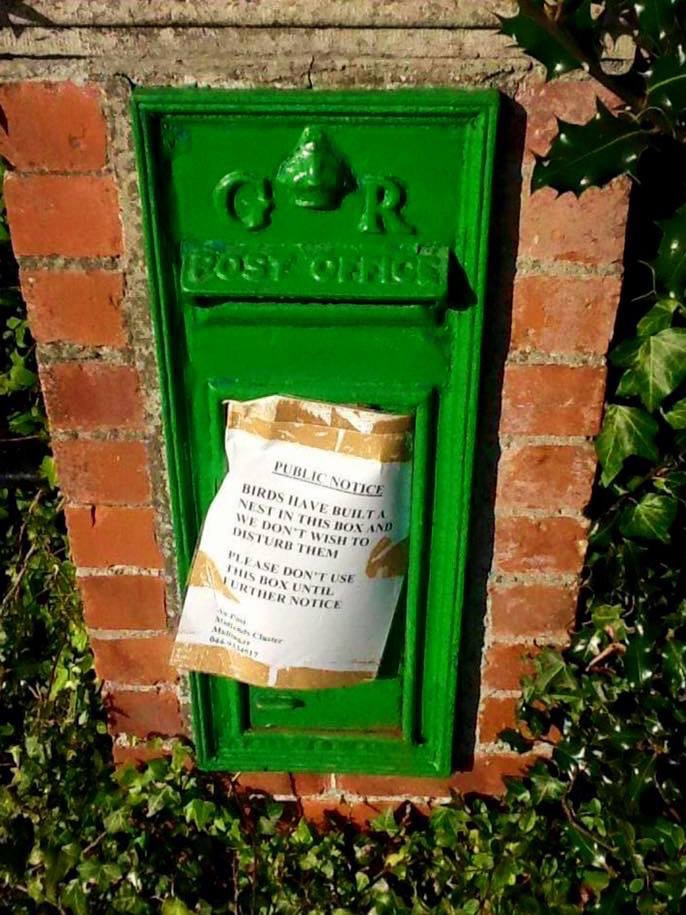-

 44cm x 33cm Rare post WW2 Fianna Fáil election manifesto poster -Step Together-Fianna Fail.The Republican Party was founded in 1926 by Eamon De Valera and his supporters after they split from Sinn Fein on the issue of abstentionism, in the aftermath of the Irish Civil War. Eamon de Valera, first registered as George de Valero; changed some time before 1901 to Edward de Valera;14 October 1882 – 29 August 1975) was a prominent statesman and political leader in 20th-century Ireland. His political career spanned over half a century, from 1917 to 1973; he served several terms as head of government and head of state. He also led the introduction of the Constitution of Ireland. Prior to de Valera's political career, he was a Commandant at Boland's Mill during the 1916 Easter Rising, an Irish revolution that would eventually contribute to Irish independence. He was arrested, sentenced to death but released for a variety of reasons, including the public response to the British execution of Rising leaders. He returned to Ireland after being jailed in England and became one of the leading political figures of the War of Independence. After the signing of the Anglo-Irish Treaty, de Valera served as the political leader of Anti-Treaty Sinn Fein until 1926, when he, along with many supporters, left the party to set up Fianna Fáil, a new political party which abandoned the policy of abstentionism from Dáil Éireann. From there, de Valera would go on to be at the forefront of Irish politics until the turn of the 1960s. He took over as President of the Executive Councilfrom W. T. Cosgrave and later Taoiseach, with the passing of Bunreacht Na hEireann (Irish constitution) in 1937. He would serve as Taoiseach on 3 occasions; from 1937 to 1948, from 1951 to 1954 and finally from 1957 to 1959. He remains the longest serving Taoiseach by total days served in the post. He resigned in 1959 upon his election as President of Ireland. By then, he had been Leader of Fianna Fáil for 33 years, and he, along with older founding members, began to take a less prominent role relative to newer ministers such as Jack Lynch, Charles Haughey and Neil Blaney. He would serve as President from 1959 to 1973, two full terms in office. De Valera's political beliefs evolved from militant Irish republicanism to strong social, cultural and economic conservatism.He has been characterised by a stern, unbending, devious demeanor. His roles in the Civil War have also portrayed him as a divisive figure in Irish history. Biographer Tim Pat Coogan sees his time in power as being characterised by economic and cultural stagnation, while Diarmaid Ferriter argues that the stereotype of de Valera as an austere, cold and even backward figure was largely manufactured in the 1960s and is misguided. Origins: Co Clare Dimensions : 50cm x 40cm
44cm x 33cm Rare post WW2 Fianna Fáil election manifesto poster -Step Together-Fianna Fail.The Republican Party was founded in 1926 by Eamon De Valera and his supporters after they split from Sinn Fein on the issue of abstentionism, in the aftermath of the Irish Civil War. Eamon de Valera, first registered as George de Valero; changed some time before 1901 to Edward de Valera;14 October 1882 – 29 August 1975) was a prominent statesman and political leader in 20th-century Ireland. His political career spanned over half a century, from 1917 to 1973; he served several terms as head of government and head of state. He also led the introduction of the Constitution of Ireland. Prior to de Valera's political career, he was a Commandant at Boland's Mill during the 1916 Easter Rising, an Irish revolution that would eventually contribute to Irish independence. He was arrested, sentenced to death but released for a variety of reasons, including the public response to the British execution of Rising leaders. He returned to Ireland after being jailed in England and became one of the leading political figures of the War of Independence. After the signing of the Anglo-Irish Treaty, de Valera served as the political leader of Anti-Treaty Sinn Fein until 1926, when he, along with many supporters, left the party to set up Fianna Fáil, a new political party which abandoned the policy of abstentionism from Dáil Éireann. From there, de Valera would go on to be at the forefront of Irish politics until the turn of the 1960s. He took over as President of the Executive Councilfrom W. T. Cosgrave and later Taoiseach, with the passing of Bunreacht Na hEireann (Irish constitution) in 1937. He would serve as Taoiseach on 3 occasions; from 1937 to 1948, from 1951 to 1954 and finally from 1957 to 1959. He remains the longest serving Taoiseach by total days served in the post. He resigned in 1959 upon his election as President of Ireland. By then, he had been Leader of Fianna Fáil for 33 years, and he, along with older founding members, began to take a less prominent role relative to newer ministers such as Jack Lynch, Charles Haughey and Neil Blaney. He would serve as President from 1959 to 1973, two full terms in office. De Valera's political beliefs evolved from militant Irish republicanism to strong social, cultural and economic conservatism.He has been characterised by a stern, unbending, devious demeanor. His roles in the Civil War have also portrayed him as a divisive figure in Irish history. Biographer Tim Pat Coogan sees his time in power as being characterised by economic and cultural stagnation, while Diarmaid Ferriter argues that the stereotype of de Valera as an austere, cold and even backward figure was largely manufactured in the 1960s and is misguided. Origins: Co Clare Dimensions : 50cm x 40cm -

 34cm x 22cmThis Flying Column operated across the West Mayo area during the War of Independence. The photograph was taken shortly after the Carrowkennedy ambush on a RIC Barracks; the men are displaying the captured weapons. On the 2nd June 1921 the West Mayo Flying Column ambushed British soldiers on the Westport to Leenane road. After the ambush they went on the run. While near Laherdane in the vicinity of Neiphin Mountain they were visited by Jack Leonard. Leonard was a photographer and a cousin of Michael Kilroy, who was the Officer in Command of the brigade and took the only photograph of the Flying Column that exists.
34cm x 22cmThis Flying Column operated across the West Mayo area during the War of Independence. The photograph was taken shortly after the Carrowkennedy ambush on a RIC Barracks; the men are displaying the captured weapons. On the 2nd June 1921 the West Mayo Flying Column ambushed British soldiers on the Westport to Leenane road. After the ambush they went on the run. While near Laherdane in the vicinity of Neiphin Mountain they were visited by Jack Leonard. Leonard was a photographer and a cousin of Michael Kilroy, who was the Officer in Command of the brigade and took the only photograph of the Flying Column that exists.
-

 35cm x 40cmEFORE THE ADVENT of opinion polls, by-elections were the most reliable means of gauging the mood of the electorate.For decades before the 1916 Rising, Irish nationalists represented by the Irish Parliamentary Party (IPP) sought Irish home rule – a subordinate parliament and government in Dublin.But the emergence of Sinn Féin, which championed an independent Irish republic, transformed the political landscape. In 1917 Sinn Féin won four by-elections on the bounce in North Roscommon, South Longford, East Clare and South Kilkenny.No victory was more emphatic than East Clare and no winning candidate more central to the future history of Ireland.A political noviceThe victor was a political novice with little experience of public speaking outside the classroom. The senior surviving Volunteer from 1916, he was largely unknown before the East Clare by-election.But after it he was catapulted to national prominence, became president of Sinn Féin and represented East Clare for the next four decades. That soldier turned politician was De Valera .The East Clare by-election on July 10 was precipitated by the death on the Western Front of the sitting MP: Major Willie Redmond, brother of the leader of the IPP.Patrick Lynch KC, a barrister, contested the seat for the IPP under the banner: “Clare for a Clareman – Lynch is the Man”. His supporters, who were strongest in Ennis, contended that an Irish republic was a political fantasy. For several reasons, few expected anything other than a Sinn Féin victory.One of the most rebellious counties in IrelandFirst, Clare was one of the most rebellious counties in Ireland and during the by-election the county inspector of the Royal Irish Constabulary had to obtain a draft of 150 soldiers. Eight months after the by-election Clare became the first county to be placed under military rule since the 1916 Rising.Second, no election had been contested in East Clare since 1895 and the IPP’s constituency machine was decrepit and almost bankrupt. By contrast, the Sinn Féin campaign was highly organised and backboned by the revamped Irish Volunteers who were unafraid to defy the authorities and acted as a private police force.De Valera, who had only been released from prison on 16 June, campaigned in his Volunteer uniform and told the electors that, “every vote you give now is as good as the crack of a rifle in proclaiming your desire for freedom”.Third, buoyed up by its earlier electoral successes Sinn Féin attracted not just the support of the young but that of the Clare Champion (the county newspaper) and, more significantly, the endorsement of Bishop Michael Fogarty of Killaloe and the majority of younger clergy. The Catholic card was played astutely and reassuringly by de Valera.Although everyone expected a victory for de Valera, no one expected so stunning a winning margin. When the result of the election was announced on July 11 de Valera had secured 5,010 votes to Lynch’s 2,035.A game changerThe rural vote had turned against the IPP. The Freeman’s Journal, the newspaper of the IPP, lamented that, “East Clare has declared for revolution by an overwhelming majority”. Lynch was not the man after all.The East Clare by-election was a milestone for Sinn Féin because it secured a striking popular mandate which helped the organisation to continue its rapid growth ahead of the 1918 general election.For de Valera his victory was a pivotal episode in his progression from militant to political republican. More than any other factor, the scale of his success propelled him to the presidency of Sinn Féin in October 1917 and launched his long political career. For a man who in the early months of 1917 wished to have no truck with politics this was quite a turn of events.
35cm x 40cmEFORE THE ADVENT of opinion polls, by-elections were the most reliable means of gauging the mood of the electorate.For decades before the 1916 Rising, Irish nationalists represented by the Irish Parliamentary Party (IPP) sought Irish home rule – a subordinate parliament and government in Dublin.But the emergence of Sinn Féin, which championed an independent Irish republic, transformed the political landscape. In 1917 Sinn Féin won four by-elections on the bounce in North Roscommon, South Longford, East Clare and South Kilkenny.No victory was more emphatic than East Clare and no winning candidate more central to the future history of Ireland.A political noviceThe victor was a political novice with little experience of public speaking outside the classroom. The senior surviving Volunteer from 1916, he was largely unknown before the East Clare by-election.But after it he was catapulted to national prominence, became president of Sinn Féin and represented East Clare for the next four decades. That soldier turned politician was De Valera .The East Clare by-election on July 10 was precipitated by the death on the Western Front of the sitting MP: Major Willie Redmond, brother of the leader of the IPP.Patrick Lynch KC, a barrister, contested the seat for the IPP under the banner: “Clare for a Clareman – Lynch is the Man”. His supporters, who were strongest in Ennis, contended that an Irish republic was a political fantasy. For several reasons, few expected anything other than a Sinn Féin victory.One of the most rebellious counties in IrelandFirst, Clare was one of the most rebellious counties in Ireland and during the by-election the county inspector of the Royal Irish Constabulary had to obtain a draft of 150 soldiers. Eight months after the by-election Clare became the first county to be placed under military rule since the 1916 Rising.Second, no election had been contested in East Clare since 1895 and the IPP’s constituency machine was decrepit and almost bankrupt. By contrast, the Sinn Féin campaign was highly organised and backboned by the revamped Irish Volunteers who were unafraid to defy the authorities and acted as a private police force.De Valera, who had only been released from prison on 16 June, campaigned in his Volunteer uniform and told the electors that, “every vote you give now is as good as the crack of a rifle in proclaiming your desire for freedom”.Third, buoyed up by its earlier electoral successes Sinn Féin attracted not just the support of the young but that of the Clare Champion (the county newspaper) and, more significantly, the endorsement of Bishop Michael Fogarty of Killaloe and the majority of younger clergy. The Catholic card was played astutely and reassuringly by de Valera.Although everyone expected a victory for de Valera, no one expected so stunning a winning margin. When the result of the election was announced on July 11 de Valera had secured 5,010 votes to Lynch’s 2,035.A game changerThe rural vote had turned against the IPP. The Freeman’s Journal, the newspaper of the IPP, lamented that, “East Clare has declared for revolution by an overwhelming majority”. Lynch was not the man after all.The East Clare by-election was a milestone for Sinn Féin because it secured a striking popular mandate which helped the organisation to continue its rapid growth ahead of the 1918 general election.For de Valera his victory was a pivotal episode in his progression from militant to political republican. More than any other factor, the scale of his success propelled him to the presidency of Sinn Féin in October 1917 and launched his long political career. For a man who in the early months of 1917 wished to have no truck with politics this was quite a turn of events. -

 Beautiful artwork depicting the ultra talented but ill fated Derby Winner Shergar. Origins :Naas Co Kildare. Dimensions: 60cm x 70cm Glazed Shergar was an Irish-bred, British-trained Thoroughbred racehorse. After a very successful season in 1981 he was retired to the Ballymany Stud in County Kildare, Ireland. In 1983 he was stolen from the stud, and a ransom of £2 million was demanded; it was not paid, and negotiations were soon broken off by the thieves. In 1999 a supergrass, formerly in the Provisional Irish Republican Army (IRA), stated they stole the horse. The IRA has never admitted any role in the theft. The Aga Khan, Shergar's owner, sent the horse for training in Britain in 1979 and 1980. Shergar began his first season of racing in September 1980 and ran two races that year, where he won one and came second in the other. In 1981 he ran in six races, winning five of them. In June that year he won the 202nd Epsom Derby by ten lengths—the longest winning margin in the race's history. Three weeks later he won the Irish Sweeps Derby by four lengths; a month after that he won the King George VI and Queen Elizabeth Stakes by four lengths. In his final race of the year he came in fourth, and the Aga Khan took the decision to retire him to stud in Ireland. After Shergar's Epsom Derby win, the Aga Khan sold 40 shares in the horse, valuing it at £10 million. Retaining six shares, he created an owners' syndicate with the remaining 34 members. Shergar was stolen from the Aga Khan's stud farm by an armed gang on 8 February 1983. Negotiations were conducted with the thieves, but the gang broke off all communication after four days when the syndicate did not accept as true the proof provided that the horse was still alive. In 1999 Sean O'Callaghan, a former member of the IRA, published details of the theft and stated that it was an IRA operation to raise money for arms. He said that very soon after the theft, Shergar had panicked and damaged his leg, which led to him being killed by the gang. An investigation by The Sunday Telegraph concluded that the horse was shot four days after the theft. No arrests have ever been made in relation to the theft. Shergar's body has never been recovered or identified; it is likely that the body was buried near Aughnasheelin, near Ballinamore, County Leitrim. In honour of Shergar, the Shergar Cup was inaugurated in 1999. His story has been made into two screen dramatisations, several books and two documentaries.
Beautiful artwork depicting the ultra talented but ill fated Derby Winner Shergar. Origins :Naas Co Kildare. Dimensions: 60cm x 70cm Glazed Shergar was an Irish-bred, British-trained Thoroughbred racehorse. After a very successful season in 1981 he was retired to the Ballymany Stud in County Kildare, Ireland. In 1983 he was stolen from the stud, and a ransom of £2 million was demanded; it was not paid, and negotiations were soon broken off by the thieves. In 1999 a supergrass, formerly in the Provisional Irish Republican Army (IRA), stated they stole the horse. The IRA has never admitted any role in the theft. The Aga Khan, Shergar's owner, sent the horse for training in Britain in 1979 and 1980. Shergar began his first season of racing in September 1980 and ran two races that year, where he won one and came second in the other. In 1981 he ran in six races, winning five of them. In June that year he won the 202nd Epsom Derby by ten lengths—the longest winning margin in the race's history. Three weeks later he won the Irish Sweeps Derby by four lengths; a month after that he won the King George VI and Queen Elizabeth Stakes by four lengths. In his final race of the year he came in fourth, and the Aga Khan took the decision to retire him to stud in Ireland. After Shergar's Epsom Derby win, the Aga Khan sold 40 shares in the horse, valuing it at £10 million. Retaining six shares, he created an owners' syndicate with the remaining 34 members. Shergar was stolen from the Aga Khan's stud farm by an armed gang on 8 February 1983. Negotiations were conducted with the thieves, but the gang broke off all communication after four days when the syndicate did not accept as true the proof provided that the horse was still alive. In 1999 Sean O'Callaghan, a former member of the IRA, published details of the theft and stated that it was an IRA operation to raise money for arms. He said that very soon after the theft, Shergar had panicked and damaged his leg, which led to him being killed by the gang. An investigation by The Sunday Telegraph concluded that the horse was shot four days after the theft. No arrests have ever been made in relation to the theft. Shergar's body has never been recovered or identified; it is likely that the body was buried near Aughnasheelin, near Ballinamore, County Leitrim. In honour of Shergar, the Shergar Cup was inaugurated in 1999. His story has been made into two screen dramatisations, several books and two documentaries. -


The first act of the Irish Free State after independence was to paint all the post boxes throughout the country green. It was a brilliant stroke – royal red replaced by emerald green in one of the most visible and ubiquitous symbols of national administration.
The Penfold post box in Skibbereen, one of only a handful left in Ireland
Ironically, the post boxes themselves did not change, so the royal insignias were simply over-painted by the new colour. The result was a charming mixture of tradition and adaptation that serves as an ongoing reminder of the history of Ireland and its institutions.

Special stamps issued by the Royal Mail in 2015 to celebrate the bicentenary of the birth of Anthony Trollope
The first post boxes were introduced to Ireland in the 1850s by the novelist Anthony Trollope, then a Surveyor for the Post Office. Trollope was happy in Ireland and wrote several novels and stories set here, although they are not the works for which he is most remembered.
We don’t usually think of Anthony Trollope as an Irish novelist but he lived here for almost 20 years, spent working for the Post Office and writing
One of the earliest models for a free-standing post box came to be known as the Penfold, after its designer, J W Penfold. They were manufactured and deployed from 1866 to 1879 and very few have survived in Ireland to this day – only six are known and of these only three are still in operation. Skibbereen has one of those, and very fine it is: one hundred and fifty years old and still in daily use!
The hexagonal Penfold designed was apparently inspired by the Temple of the Winds in Athens (although the Temple is octagonal), with the addition of an acanthus leaf on the cap and a smart bud-shaped finial and beading.

Photograph of the Temple of the Winds from Wikipedia
Our Skibbereen Penfold is in excellent condition: note the royal insignia and the entwined VR for Victoria Regina.
The Penfolds were replaced by round pillar boxes because there were too many complaints that the hexagonal design caused letters to stick. These cylindrical boxes can be seen everywhere in Ireland still, although mostly in towns and cities. The one below is on Grand Parade in Cork.
In his book The Irish Post Box, which I gratefully acknowledge as the source of much of the information in this blog post, Stephen Ferguson describes the three main types of post boxes that have been developed for use in Ireland: pillar, wall and lamp. In rural areas, such as West Cork, wall and lamp boxes are the most common forms I have encountered.
Here’s a representative wall box in Skibbereen. Interestingly, it’s part of a mini-complex of historical markers including the plaque to the Clerke sisters (see my posts From Skibbereen to the Moon Part 1 and Part 2 for more about these remarkable women and their family) and signs for the Skibbereen heritage walking trail, all mounted together on the wall of what was the main bank in Skibbereen during the Famine period.
The box was manufactured by W T Allen and Co of London and bears the ornately scrolled insignia and crown of Edward the VII, which places it between 1901 to 1910.
Here’s another nice one in Bantry, a Victorian one, although this time the VR lettering is simpler than on the Penfold. This one has been painted so often that the embossed POST OFFICE on the protective hood has almost disappeared under the layers.
Lamp boxes were designed for remote areas where a suitable wall might not be readily available. Ferguson explains:
Lamp post boxes, based on a design used by the United States Postal Service, were first introduced in 1896 in London as a response to calls for more post boxes throughout the city. Affixed to a street lamp, the boxes were used at locations where the expense of a pillar or wall box could not be justified. In Ireland, however, they were often deployed in rural areas where, attached to a telegraph or specially erected pole by metal clips, they were very useful in extending postal collections to remote and sparsely populated regions. Tucked under hedges or used sometimes as a smaller version of a wall box, these post boxes were relatively cheap to make and easy to install and they symbolise…the extraordinary influence and reach of the Post Office as an institution at the height of its powers.
Driving or walking around rural Ireland, look out for ‘lamp’ boxes. Here’s one from the road near Barley Cove.
 A closer inspection reveals this one bears the P & T logo that was in use between 1939 and 1984, before it was replaced by the brand ‘An Post’. Sometimes the old royal initials were ground off the boxes, or sometimes the doors were replaced with new ones bearing the P&T lettering, but it seems that considerations of cost (always paramount with the careful Post Office) allowed many to simply remain in place as they were. In the early years of the new state, some were embossed with the Saorstát Éireann logo (even sharing the door with a VR insignia) but that practice was relatively short lived and I have found no examples to it yet in West Cork. The website Irish Postal History has this example from Washington Street in Cork.
A closer inspection reveals this one bears the P & T logo that was in use between 1939 and 1984, before it was replaced by the brand ‘An Post’. Sometimes the old royal initials were ground off the boxes, or sometimes the doors were replaced with new ones bearing the P&T lettering, but it seems that considerations of cost (always paramount with the careful Post Office) allowed many to simply remain in place as they were. In the early years of the new state, some were embossed with the Saorstát Éireann logo (even sharing the door with a VR insignia) but that practice was relatively short lived and I have found no examples to it yet in West Cork. The website Irish Postal History has this example from Washington Street in Cork.On Cape Clear – the most scenic post box in Ireland?
If no lamp post or suitable pole existed, a simple stake was erected to which a box could be attached. Cape Clear Island didn’t get electricity until the 1970s, so this post box (above and below) must predate the advent of poles. The logo, however, is that of An Post, which was established as the new brand in 1984. Perhaps the poles were only erected island-wide after the submarine cable was laid in the 1990s.
Not all mail boxes have been retained for active use – so what happens to them? Many simply remain in situ, as a picturesque reminder of times when we actually wrote to each other instead of texting or emailing. The one below at Rossbrin, near Ballydehob, was once attached to the wall outside the old schoolhouse. The first photograph at the start of today’s post shows its location.
And this one, at Ahakista, has been repurposed as a wayside shrine.
But even if it’s still in use, sometimes a mail boxes can’t be used for its real purpose, but has more important work to do! I don’t know where this last photograph was taken or whose work this is – it was widely circulated on the internet – but I would be happy to credit the photographer if I knew who it was. Delighted to have this also as an example of a post box from the reign of George V, 1910 to 1936.
-

 91cm x 57cm The Gaelic Athletic Association (GAA) was set up in Hayes’s Hotel in Thurles, County Tipperary in November 1884. In an address to coincide with the GAA Annual Congress the Taoiseach Garret FitzGerald, speaking on behalf of the government and the Irish people, congratulated the GAA on reaching its centenary year. He commended the contribution the GAA has made to Irish life at home and abroad.
91cm x 57cm The Gaelic Athletic Association (GAA) was set up in Hayes’s Hotel in Thurles, County Tipperary in November 1884. In an address to coincide with the GAA Annual Congress the Taoiseach Garret FitzGerald, speaking on behalf of the government and the Irish people, congratulated the GAA on reaching its centenary year. He commended the contribution the GAA has made to Irish life at home and abroad.In a unique way, it has created a sense of community among Irish people both at home and abroad.
The GAA provided enormous pleasure to millions of people of all generations. The Taoiseach reflects on the important role the GAA has played in Irish culture reflected in the way people live, work and play. The sports of hurling and football are a major strand in the culture of Ireland. The impact that the GAA has on Irish life is far stronger than politics.No political event nowadays can assemble eighty thousand people filled with passion and excitement in one place.
Garret FitzGerald describes hurling as the game of the heroic age and it is appropriate that the GAA Congress in the centenary year should be held in Cú Chulainn’s Ulster. A hundred years ago, Gaelic sports were under threat of dying out and the GAA turned this threat around by making the games an integral part of Irish life again. Nine years after the establishment of the GAA, Eoin MacNeill and Douglas Hyde followed in the footsteps of Michael Cusack and founded the Gaelic League in 1893. The establishment of both organisations ensured that both the Irish language and games survived. The Taoiseach applauds the thousands of volunteers who have made the work of the GAA possible.May your work prosper and may this dimension of Irish culture that you cherish be as full of vitality a century hence as it is in this centenary year.
The GAA Centenary Taoiseach Special Message was broadcast on 22 April 1984. -


 62cm x 45cm
An absolute once off piece of Irish Memorabilia .We at the Irish Pub Emporium were so lucky to acquire from a private collector .These superb castiron road signs were commissioned by the Irish Free State in the late 1940s post and were initially the responsibility of the newly formed Irish Tourism Organisation -Fógra Failte (later to become Bord Failte and then Failte Ireland).
"The former 'fingerpost' style of Irish directional signs can still be seen in many rural areas of the Republic of Ireland. These signs differ from their modern-day equivalent as they have black raised text on a white background. Destinations are in all caps (the placename in Irish was on top and in a smaller font than the one in English). Sometimes, the former route number ("T" for trunk road, "L" for link road) can be seen, and the former Bord Fáilte logo can be seen on some (they had responsibility for signs for a time), as well as occasionally a harp. Distances on these signs are in miles.
This style of sign has become a common feature of many tourist images of Ireland and can be seen in some Irish pubs. However, they can be easily rotated, and have been done so on occasion and therefore are not completely reliable. While most examples of these signs still in situ are rural finger-posts, the advance directional sign of this era can still very occasionally be seen: this has a grey background, with the destinations in outlined, white-background boxes linked together with black lines, and the text is not raised on these, unlike on fingerposts. These signs, rare even when the system was in use, can be seen in some areas of Dún Laoghaire and Drogheda. These signs were prescribed under various regulations, with the final design prescribed under the Road Traffic Signs (Regulations) 1962.
Despite the new sign style being introduced in 1977, the design change was never legislated for (apart from a reference to the change to italics in 1989) and the old designs were repealed only under the 1997 regulations, 20 years later.
62cm x 45cm
An absolute once off piece of Irish Memorabilia .We at the Irish Pub Emporium were so lucky to acquire from a private collector .These superb castiron road signs were commissioned by the Irish Free State in the late 1940s post and were initially the responsibility of the newly formed Irish Tourism Organisation -Fógra Failte (later to become Bord Failte and then Failte Ireland).
"The former 'fingerpost' style of Irish directional signs can still be seen in many rural areas of the Republic of Ireland. These signs differ from their modern-day equivalent as they have black raised text on a white background. Destinations are in all caps (the placename in Irish was on top and in a smaller font than the one in English). Sometimes, the former route number ("T" for trunk road, "L" for link road) can be seen, and the former Bord Fáilte logo can be seen on some (they had responsibility for signs for a time), as well as occasionally a harp. Distances on these signs are in miles.
This style of sign has become a common feature of many tourist images of Ireland and can be seen in some Irish pubs. However, they can be easily rotated, and have been done so on occasion and therefore are not completely reliable. While most examples of these signs still in situ are rural finger-posts, the advance directional sign of this era can still very occasionally be seen: this has a grey background, with the destinations in outlined, white-background boxes linked together with black lines, and the text is not raised on these, unlike on fingerposts. These signs, rare even when the system was in use, can be seen in some areas of Dún Laoghaire and Drogheda. These signs were prescribed under various regulations, with the final design prescribed under the Road Traffic Signs (Regulations) 1962.
Despite the new sign style being introduced in 1977, the design change was never legislated for (apart from a reference to the change to italics in 1989) and the old designs were repealed only under the 1997 regulations, 20 years later. -


 61cm x 69cm
An absolute once off piece of Irish Memorabilia .We at the Irish Pub Emporium were so lucky to acquire from a private collector who has moved overseas.These superb castiron road signs were commissioned by the Irish Free State in the late 1940s post and were initially the responsibility of the newly formed Irish Tourism Organisation -Fógra Failte (later to become Bord Failte and then Failte Ireland).
"The former 'fingerpost' style of Irish directional signs can still be seen in many rural areas of the Republic of Ireland. These signs differ from their modern-day equivalent as they have black raised text on a white background. Destinations are in all caps (the placename in Irish was on top and in a smaller font than the one in English). Sometimes, the former route number ("T" for trunk road, "L" for link road) can be seen, and the former Bord Fáilte logo can be seen on some (they had responsibility for signs for a time), as well as occasionally a harp. Distances on these signs are in miles.
This style of sign has become a common feature of many tourist images of Ireland and can be seen in some Irish pubs. However, they can be easily rotated, and have been done so on occasion and therefore are not completely reliable. While most examples of these signs still in situ are rural finger-posts, the advance directional sign of this era can still very occasionally be seen: this has a grey background, with the destinations in outlined, white-background boxes linked together with black lines, and the text is not raised on these, unlike on fingerposts. These signs, rare even when the system was in use, can be seen in some areas of Dún Laoghaire and Drogheda. These signs were prescribed under various regulations, with the final design prescribed under the Road Traffic Signs (Regulations) 1962.
Despite the new sign style being introduced in 1977, the design change was never legislated for (apart from a reference to the change to italics in 1989) and the old designs were repealed only under the 1997 regulations, 20 years later.
61cm x 69cm
An absolute once off piece of Irish Memorabilia .We at the Irish Pub Emporium were so lucky to acquire from a private collector who has moved overseas.These superb castiron road signs were commissioned by the Irish Free State in the late 1940s post and were initially the responsibility of the newly formed Irish Tourism Organisation -Fógra Failte (later to become Bord Failte and then Failte Ireland).
"The former 'fingerpost' style of Irish directional signs can still be seen in many rural areas of the Republic of Ireland. These signs differ from their modern-day equivalent as they have black raised text on a white background. Destinations are in all caps (the placename in Irish was on top and in a smaller font than the one in English). Sometimes, the former route number ("T" for trunk road, "L" for link road) can be seen, and the former Bord Fáilte logo can be seen on some (they had responsibility for signs for a time), as well as occasionally a harp. Distances on these signs are in miles.
This style of sign has become a common feature of many tourist images of Ireland and can be seen in some Irish pubs. However, they can be easily rotated, and have been done so on occasion and therefore are not completely reliable. While most examples of these signs still in situ are rural finger-posts, the advance directional sign of this era can still very occasionally be seen: this has a grey background, with the destinations in outlined, white-background boxes linked together with black lines, and the text is not raised on these, unlike on fingerposts. These signs, rare even when the system was in use, can be seen in some areas of Dún Laoghaire and Drogheda. These signs were prescribed under various regulations, with the final design prescribed under the Road Traffic Signs (Regulations) 1962.
Despite the new sign style being introduced in 1977, the design change was never legislated for (apart from a reference to the change to italics in 1989) and the old designs were repealed only under the 1997 regulations, 20 years later. -
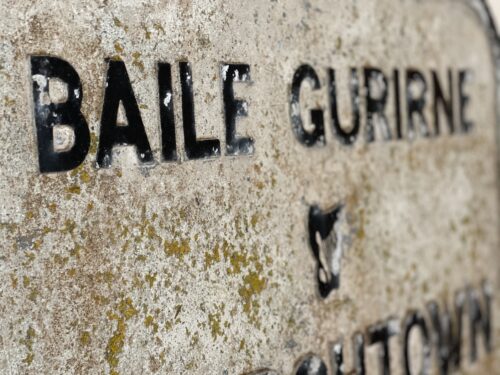
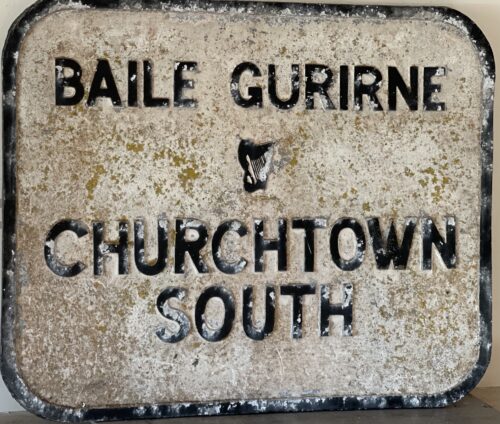
 55cm x 68cm
An absolute once off piece of Irish Memorabilia .We at the Irish Pub Emporium were so lucky to acquire from a private collector who has moved overseas.These superb castiron road signs were commissioned by the Irish Free State in the late 1940s post and were initially the responsibility of the newly formed Irish Tourism Organisation -Fógra Failte (later to become Bord Failte and then Failte Ireland).
"The former 'fingerpost' style of Irish directional signs can still be seen in many rural areas of the Republic of Ireland. These signs differ from their modern-day equivalent as they have black raised text on a white background. Destinations are in all caps (the placename in Irish was on top and in a smaller font than the one in English). Sometimes, the former route number ("T" for trunk road, "L" for link road) can be seen, and the former Bord Fáilte logo can be seen on some (they had responsibility for signs for a time), as well as occasionally a harp. Distances on these signs are in miles.
This style of sign has become a common feature of many tourist images of Ireland and can be seen in some Irish pubs. However, they can be easily rotated, and have been done so on occasion and therefore are not completely reliable. While most examples of these signs still in situ are rural finger-posts, the advance directional sign of this era can still very occasionally be seen: this has a grey background, with the destinations in outlined, white-background boxes linked together with black lines, and the text is not raised on these, unlike on fingerposts. These signs, rare even when the system was in use, can be seen in some areas of Dún Laoghaire and Drogheda. These signs were prescribed under various regulations, with the final design prescribed under the Road Traffic Signs (Regulations) 1962.
Despite the new sign style being introduced in 1977, the design change was never legislated for (apart from a reference to the change to italics in 1989) and the old designs were repealed only under the 1997 regulations, 20 years later.
55cm x 68cm
An absolute once off piece of Irish Memorabilia .We at the Irish Pub Emporium were so lucky to acquire from a private collector who has moved overseas.These superb castiron road signs were commissioned by the Irish Free State in the late 1940s post and were initially the responsibility of the newly formed Irish Tourism Organisation -Fógra Failte (later to become Bord Failte and then Failte Ireland).
"The former 'fingerpost' style of Irish directional signs can still be seen in many rural areas of the Republic of Ireland. These signs differ from their modern-day equivalent as they have black raised text on a white background. Destinations are in all caps (the placename in Irish was on top and in a smaller font than the one in English). Sometimes, the former route number ("T" for trunk road, "L" for link road) can be seen, and the former Bord Fáilte logo can be seen on some (they had responsibility for signs for a time), as well as occasionally a harp. Distances on these signs are in miles.
This style of sign has become a common feature of many tourist images of Ireland and can be seen in some Irish pubs. However, they can be easily rotated, and have been done so on occasion and therefore are not completely reliable. While most examples of these signs still in situ are rural finger-posts, the advance directional sign of this era can still very occasionally be seen: this has a grey background, with the destinations in outlined, white-background boxes linked together with black lines, and the text is not raised on these, unlike on fingerposts. These signs, rare even when the system was in use, can be seen in some areas of Dún Laoghaire and Drogheda. These signs were prescribed under various regulations, with the final design prescribed under the Road Traffic Signs (Regulations) 1962.
Despite the new sign style being introduced in 1977, the design change was never legislated for (apart from a reference to the change to italics in 1989) and the old designs were repealed only under the 1997 regulations, 20 years later. -
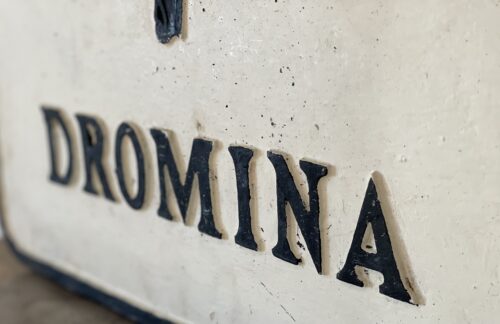
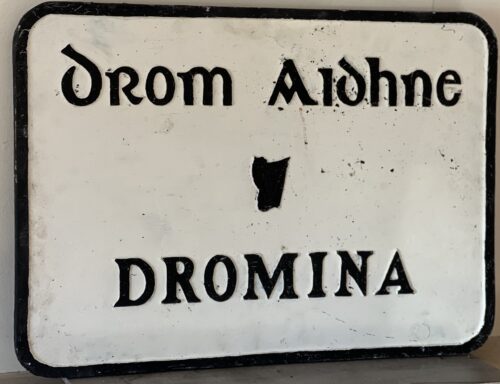
 45cm x 66cm
An absolute once off piece of Irish Memorabilia .We at the Irish Pub Emporium were so lucky to acquire from a private collector who has moved overseas.These superb castiron road signs were commissioned by the Irish Free State in the late 1940s post and were initially the responsibility of the newly formed Irish Tourism Organisation -Fógra Failte (later to become Bord Failte and then Failte Ireland).
"The former 'fingerpost' style of Irish directional signs can still be seen in many rural areas of the Republic of Ireland. These signs differ from their modern-day equivalent as they have black raised text on a white background. Destinations are in all caps (the placename in Irish was on top and in a smaller font than the one in English). Sometimes, the former route number ("T" for trunk road, "L" for link road) can be seen, and the former Bord Fáilte logo can be seen on some (they had responsibility for signs for a time), as well as occasionally a harp. Distances on these signs are in miles.
This style of sign has become a common feature of many tourist images of Ireland and can be seen in some Irish pubs. However, they can be easily rotated, and have been done so on occasion and therefore are not completely reliable. While most examples of these signs still in situ are rural finger-posts, the advance directional sign of this era can still very occasionally be seen: this has a grey background, with the destinations in outlined, white-background boxes linked together with black lines, and the text is not raised on these, unlike on fingerposts. These signs, rare even when the system was in use, can be seen in some areas of Dún Laoghaire and Drogheda. These signs were prescribed under various regulations, with the final design prescribed under the Road Traffic Signs (Regulations) 1962.
Despite the new sign style being introduced in 1977, the design change was never legislated for (apart from a reference to the change to italics in 1989) and the old designs were repealed only under the 1997 regulations, 20 years later.
45cm x 66cm
An absolute once off piece of Irish Memorabilia .We at the Irish Pub Emporium were so lucky to acquire from a private collector who has moved overseas.These superb castiron road signs were commissioned by the Irish Free State in the late 1940s post and were initially the responsibility of the newly formed Irish Tourism Organisation -Fógra Failte (later to become Bord Failte and then Failte Ireland).
"The former 'fingerpost' style of Irish directional signs can still be seen in many rural areas of the Republic of Ireland. These signs differ from their modern-day equivalent as they have black raised text on a white background. Destinations are in all caps (the placename in Irish was on top and in a smaller font than the one in English). Sometimes, the former route number ("T" for trunk road, "L" for link road) can be seen, and the former Bord Fáilte logo can be seen on some (they had responsibility for signs for a time), as well as occasionally a harp. Distances on these signs are in miles.
This style of sign has become a common feature of many tourist images of Ireland and can be seen in some Irish pubs. However, they can be easily rotated, and have been done so on occasion and therefore are not completely reliable. While most examples of these signs still in situ are rural finger-posts, the advance directional sign of this era can still very occasionally be seen: this has a grey background, with the destinations in outlined, white-background boxes linked together with black lines, and the text is not raised on these, unlike on fingerposts. These signs, rare even when the system was in use, can be seen in some areas of Dún Laoghaire and Drogheda. These signs were prescribed under various regulations, with the final design prescribed under the Road Traffic Signs (Regulations) 1962.
Despite the new sign style being introduced in 1977, the design change was never legislated for (apart from a reference to the change to italics in 1989) and the old designs were repealed only under the 1997 regulations, 20 years later. -

 61cm x 69cm
An absolute once off piece of Irish Memorabilia .We at the Irish Pub Emporium were so lucky to acquire from a private collector who has moved overseas.These superb castiron road signs were commissioned by the Irish Free State in the late 1940s post and were initially the responsibility of the newly formed Irish Tourism Organisation -Fógra Failte (later to become Bord Failte and then Failte Ireland).
"The former 'fingerpost' style of Irish directional signs can still be seen in many rural areas of the Republic of Ireland. These signs differ from their modern-day equivalent as they have black raised text on a white background. Destinations are in all caps (the placename in Irish was on top and in a smaller font than the one in English). Sometimes, the former route number ("T" for trunk road, "L" for link road) can be seen, and the former Bord Fáilte logo can be seen on some (they had responsibility for signs for a time), as well as occasionally a harp. Distances on these signs are in miles.
This style of sign has become a common feature of many tourist images of Ireland and can be seen in some Irish pubs. However, they can be easily rotated, and have been done so on occasion and therefore are not completely reliable. While most examples of these signs still in situ are rural finger-posts, the advance directional sign of this era can still very occasionally be seen: this has a grey background, with the destinations in outlined, white-background boxes linked together with black lines, and the text is not raised on these, unlike on fingerposts. These signs, rare even when the system was in use, can be seen in some areas of Dún Laoghaire and Drogheda. These signs were prescribed under various regulations, with the final design prescribed under the Road Traffic Signs (Regulations) 1962.
Despite the new sign style being introduced in 1977, the design change was never legislated for (apart from a reference to the change to italics in 1989) and the old designs were repealed only under the 1997 regulations, 20 years later.
61cm x 69cm
An absolute once off piece of Irish Memorabilia .We at the Irish Pub Emporium were so lucky to acquire from a private collector who has moved overseas.These superb castiron road signs were commissioned by the Irish Free State in the late 1940s post and were initially the responsibility of the newly formed Irish Tourism Organisation -Fógra Failte (later to become Bord Failte and then Failte Ireland).
"The former 'fingerpost' style of Irish directional signs can still be seen in many rural areas of the Republic of Ireland. These signs differ from their modern-day equivalent as they have black raised text on a white background. Destinations are in all caps (the placename in Irish was on top and in a smaller font than the one in English). Sometimes, the former route number ("T" for trunk road, "L" for link road) can be seen, and the former Bord Fáilte logo can be seen on some (they had responsibility for signs for a time), as well as occasionally a harp. Distances on these signs are in miles.
This style of sign has become a common feature of many tourist images of Ireland and can be seen in some Irish pubs. However, they can be easily rotated, and have been done so on occasion and therefore are not completely reliable. While most examples of these signs still in situ are rural finger-posts, the advance directional sign of this era can still very occasionally be seen: this has a grey background, with the destinations in outlined, white-background boxes linked together with black lines, and the text is not raised on these, unlike on fingerposts. These signs, rare even when the system was in use, can be seen in some areas of Dún Laoghaire and Drogheda. These signs were prescribed under various regulations, with the final design prescribed under the Road Traffic Signs (Regulations) 1962.
Despite the new sign style being introduced in 1977, the design change was never legislated for (apart from a reference to the change to italics in 1989) and the old designs were repealed only under the 1997 regulations, 20 years later. -

 45cm x 35cm I got this piece of interesting information from ‘The Unquiet Grave‘, The Development of Kerry’s Burial Grounds through the Ages – that very interesting book edited by Michael Connolly for Kerry County Council. The chapter on A Tale of Two Tombs tells the fascinating story of the rise and fall of the Donovan family of Tralee, who were wealthy merchants in the town through three generations in 1800’s. Some of you will remember that the Donovans also owned the Jeanie Johnston, which was the Donovan’s most important ship carrying emigrants on the outward journey to Quebec and bringing cargoes of timber back on the return voyage. John Donovan was the founding father and set up a hardware business initially in the Square, Tralee and then branched out leasing and owning shipping bringing iron, coal and slate to Tralee. His sons Nicholas and Henry followed him, they also became the leading political as well as the leading merchants in the town. There is a brilliant description of John’s funeral . He died in 1864 when he was 82 and we are told ‘All the stops were pulled out for the full pageantry of Victorian obsequies’. The Kerry Evening Post reported ‘an unusual grief had fallen upon the town’. According to the same newspaper there were 174 carriages, and there was an important extra little detail -‘the majority were drawn by two horses’ – a two-horse carriage indicated greater social standing than a one-horse carriage’ Try and get hold of this very interesting book from the County Council or log on here for the digital version. And were there any women there at all? Yes, but they were there with a purpose – to provide the all important keening that was then the expected norm at all funerals of all classes. At this funeral we are told ‘The poor of the town, beneficiaries of John Donovan’s generosity, congregated outside the house in The Square, and when the coffin was removed to the hearse, they set up an immense keening, which they continued as they followed the funeral all the way to Ballyseedy’. Another interesting fact relating to women and their own funerals at this time was that ‘while men were buried in the middle of the day, the women, on the other hand were buried early in the morning, regardless of the time of year’. John Donovan’s own wife Catherine was buried in the dark at 6am on a February morning and Nicholas’ wife was buried at the same time in December 1878. ‘Only Henry’s wife was buried in daylight and that was because the burial was at 8am on an August morning in 1885. The higher status of men was constantly affirmed. We have come a long way!
45cm x 35cm I got this piece of interesting information from ‘The Unquiet Grave‘, The Development of Kerry’s Burial Grounds through the Ages – that very interesting book edited by Michael Connolly for Kerry County Council. The chapter on A Tale of Two Tombs tells the fascinating story of the rise and fall of the Donovan family of Tralee, who were wealthy merchants in the town through three generations in 1800’s. Some of you will remember that the Donovans also owned the Jeanie Johnston, which was the Donovan’s most important ship carrying emigrants on the outward journey to Quebec and bringing cargoes of timber back on the return voyage. John Donovan was the founding father and set up a hardware business initially in the Square, Tralee and then branched out leasing and owning shipping bringing iron, coal and slate to Tralee. His sons Nicholas and Henry followed him, they also became the leading political as well as the leading merchants in the town. There is a brilliant description of John’s funeral . He died in 1864 when he was 82 and we are told ‘All the stops were pulled out for the full pageantry of Victorian obsequies’. The Kerry Evening Post reported ‘an unusual grief had fallen upon the town’. According to the same newspaper there were 174 carriages, and there was an important extra little detail -‘the majority were drawn by two horses’ – a two-horse carriage indicated greater social standing than a one-horse carriage’ Try and get hold of this very interesting book from the County Council or log on here for the digital version. And were there any women there at all? Yes, but they were there with a purpose – to provide the all important keening that was then the expected norm at all funerals of all classes. At this funeral we are told ‘The poor of the town, beneficiaries of John Donovan’s generosity, congregated outside the house in The Square, and when the coffin was removed to the hearse, they set up an immense keening, which they continued as they followed the funeral all the way to Ballyseedy’. Another interesting fact relating to women and their own funerals at this time was that ‘while men were buried in the middle of the day, the women, on the other hand were buried early in the morning, regardless of the time of year’. John Donovan’s own wife Catherine was buried in the dark at 6am on a February morning and Nicholas’ wife was buried at the same time in December 1878. ‘Only Henry’s wife was buried in daylight and that was because the burial was at 8am on an August morning in 1885. The higher status of men was constantly affirmed. We have come a long way!

